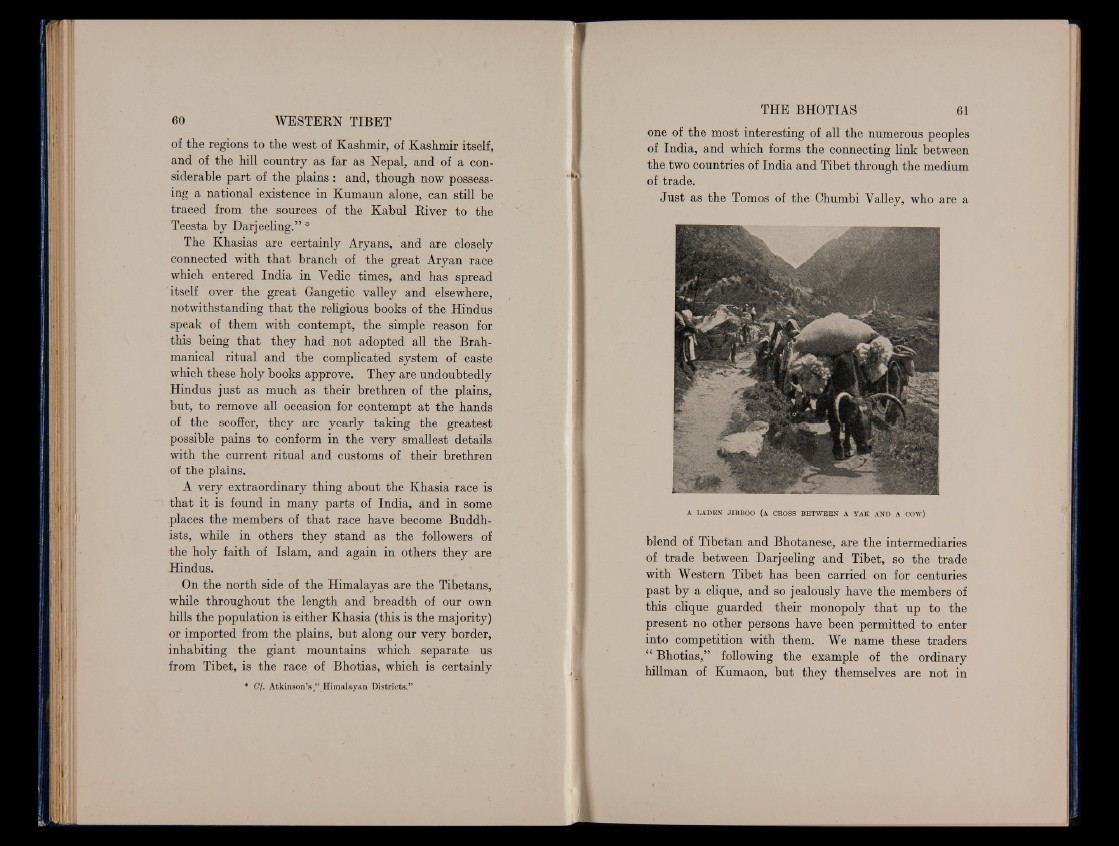
of the regions to the west of Kashmir, of Kashmir itself,
and of the hill country as far as Nepal, and of a considerable
part of the plains : and, though now possessing
a national existence in Kumaun alone, can still be
traced from the sources of the Kabul River to the
Teesta by Darjeeling.” *
The Khasias are certainly Aryans, and are closely
connected with that branch of the great Aryan race
which entered India in Vedic times, and has spread
itself over the great Gangetic valley and elsewhere,
notwithstanding that the religious books of the Hindus
speak of them with contempt, the simple reason for
this being that they had not adopted all the Brah-
manical ritual and the complicated system of caste
which these holy books approve. They are undoubtedly
Hindus just as much as their brethren of the plains,
but, to remove all occasion for contempt at the hands
of the scoffer, they are yearly taking the greatest
possible pains to conform in the very smallest details
with the current ritual and customs of their brethren
of the plains.
A very extraordinary thing about the Khasia race is
that it is found in many parts of India, and in some
places the members of that race have become Buddhists,
while in others they stand as the followers of
the holy faith of Islam, and again in others they are
Hindus.
On the north side of the Himalayas are the Tibetans,
while throughout the length and breadth of our own
hills the population is either Khasia (this is the majority)
or imported from the plains, but along our very border,
inhabiting the giant mountains which separate us
from Tibet, is the race of Bhotias, which is certainly
* Cf. Atkinson’s/ 4 Himalayan Districts.”
one of the most interesting of all the numerous peoples
of India, and which forms the connecting link between
the two countries of India and Tibet through the medium
of trade.
Just as the Tomos of the Chumbi Valley, who are a
A LADEN JIBBOO (A CROSS BE TWEEN A YAK AND A COW)
blend of Tibetan and Bhotanese, are the intermediaries
of trade between Darjeeling and Tibet, so the trade
with Western Tibet has been carried on for centuries
past by a clique, and so jealously have the members of
this clique guarded their monopoly that up to the
present no other persons have been permitted to enter
into competition with them. We name these traders
“ Bhotias,” following the example of the ordinary
hillman of Kumaon, but they themselves are not in